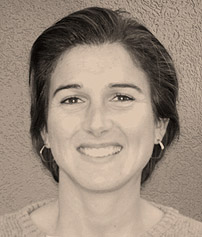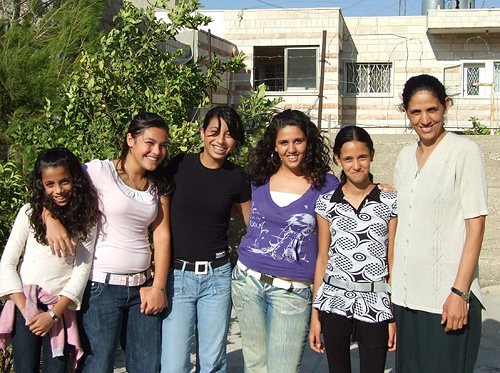|
Palestinian youth talk about
the importance of the land

By
Vicky
Samantha Rossi
TFF
Associate and Board member
Comments directly to
vickyrossi555@gmail.com
December 2, 2007
November 29 is the International Day of Solidarity with Palestinian People.
The year 2008 will mark 60 years since the flight of the first Palestine refugees. The marking of all tragic events is an important time to both remember what has been in the past and to envision anew paths towards a more vibrant future. Refugee status is more often than not percieved as a stigma by the “outside world” and even by many within Palestinian society itself. Yet, in truth, there is nobody better to tell the story of Palestine refugees than the refugees themselves.
The land is an intrinsic part of the Palestinian identity. The importance of the land for the Palestinian people makes the 1948 and 1967 refugee question all the more poignant. In testimony to this fact, a custom is developing of refugees going back to the villages from where they fled or were expulsed to collect and bring back soil.
Like the olive tree, Palestinians see their roots going deep into the earth. Parents plant olive trees for future generations in the full knowledge that they themselves will never see the fruits of their labour. The time of the harvest in October each year is an important family celebration, when mother, father and children venture into the fields for long hours to pick the olives from the trees.
Myriam (13 years old), Luma, (15 years), Dima (14 years), Hala (12 years) and Ghaed, (12 years), from the Deheisheh (1) refugee camp, participated with other youngsters from Bethlehem, Beit Sahour and Beit Jalla in the Tent of Nations’ Summer Camp, a project born from the Nassar family’s struggle to avoid the confiscation of its land by the state of Israel. “In our fight to prevent our land being confiscated we said to ourselves, ‘Why don’t we create new life out of this sad story of problems, restrictions and struggle?’” explains Daoud Nassar. The Summer Camp is just one of the important projects that the Tent of Nations now runs on the land.

Tent of Nations Summer Camp group
“Despite all the troubles, we will not be disconnected from our land,” says Dima, “We are here. We are not leaving.” She explains that the Palestinian connection with the land is deep; it is not simply a matter of the fruits and vegetables the land provides; the connection is an existential one. “The land is my life”, says Luma. Hala describes it as “our mother.” “The land is a part of me because I was born here and we are still here," she explains.
Dima’s family was originally from Zakaria, a place that now looks like a “ghost town”. She blames her grandparents for having fled in 1948. “Why did they leave?” she asks. She herself has never tried to visit Zakaria.
How do these youngsters deal with their anger and the frustration of living in a sprawling refugee camp? “I don’t like to make any trouble,” says Myriam, “So I draw and write. When I am happy I paint in yellow; when I am frustrated I paint in a dark colour.” She also points to music as a positive way of channelling her anger. “In Deheisheh, some people formed a group called the Refugee Rappers. They were angry and frustrated”, Myriam explains, “Now after the songs, they are changed people.”
During the Tent of Nations Summer Camp, the girls played football; made a mosiac with broken tiles that they had collected from the rubbish; moulded animals out of play dough; and painted different shapes on the walls. “I felt I was free”, says Myriam, “I was out in the open on the land. I could see into the distance. But then in the evening, I had to come back to my home in the refugee camp where everything is so close together.” Luma’s experience of the Summer Camp was one of self-empowerment, “I didn’t realise at the beginning of the Camp what I was capable of. By the end, I felt I could achieve anything.” Similarly, Dima’s time on the land put her in touch with her own innate creativity, “The land is me. It inspires me. It is a place where I can be creative, where I can learn new things.” Evidently, as well as being a cause for despair when the connection between individual and territory is forcibly cut, the land can also be a source of healing and reconciliation.
Footnote:
1. Dheisheh refugee camp http://www.un.org/unrwa/refugees/westbank/dheisheh.html
Dheisheh camp was established in 1949 within the municipal boundaries of Bethlehem on 430 dunums. Registered Refugee Population: 12,045.
Copyright © TFF &
Rossi 2007
Tell a friend about this column/interview by Vicky
Rossi
Send to:
From:
Message and your name
Get
free articles & updates
|